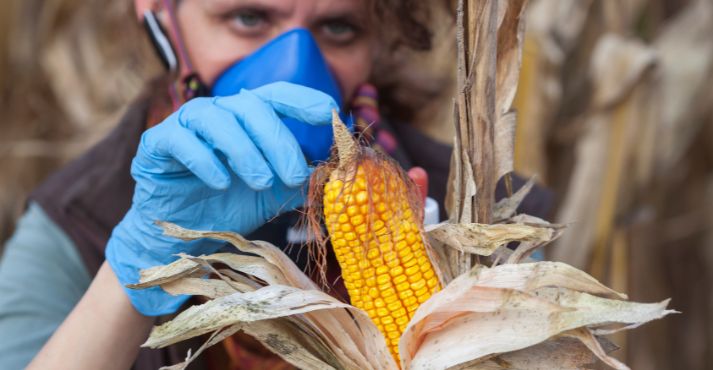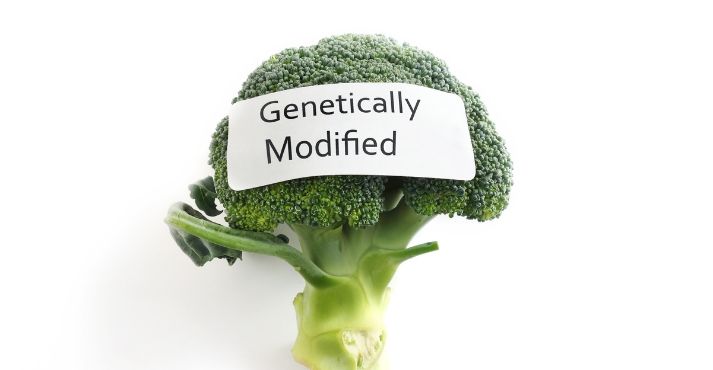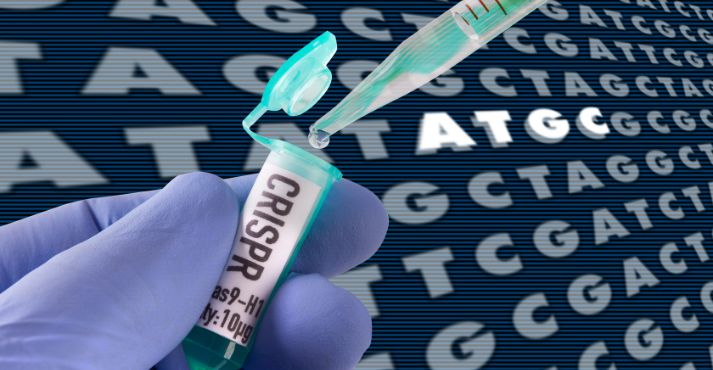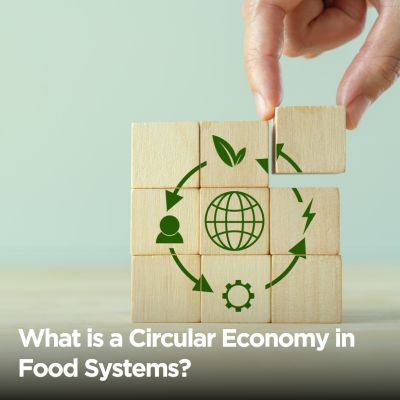In farming, Genetically Modified (GM) food is a big step in using innovative science. It’s about changing the DNA of plants or animals on purpose. Scientists do this to give them unique traits, such as being tougher against bugs or having more nutrients.
This excellent approach has changed how we grow food worldwide. GM food helps make more food, so we have enough to eat.
But it’s not all cheers—some people worry about the environment, health, and what’s right. As we look into this domain of food science, we’ll dig into the details and talk about GM food.
Decoding Genetic Modification

Let’s dive into the science behind genetic modification—it’s like a toolkit for upgrading our food. Scientists use techniques such as adding, removing, or changing genes in food organisms.
This helps make improvements, like making crops more challenging against bugs or boosting their nutrients.
Making Traits Better
Unlocking Genetic Tricks:
Genetic modification isn’t a one-size-fits-all thing. It’s about using tricks, like adding new genes or tweaking the existing ones. These tricks aim to make our food better by enhancing traits that matter, such as making plants stronger or more nutritious.
Boosting Traits with Genetic Changes:
The goal is simple—make our food better for us. This could mean making crops stand up better against pests or diseases or giving them more of the good stuff we need. Understanding these tricks gives us a peek into how scientists work to upgrade the traits of our food.
Exploring Techniques for Genetic Engineering in Food:
Looking at genetic modification, exploring the techniques used to upgrade our food. Scientists work with genetic engineering, changing genes to make our crops better. It’s like a science toolkit for giving us the traits we want.
Enhancing Traits through Genetic Modification:
In the world of genetic modification, it’s all about improving our food. Using tricks like adding or changing genes, scientists aim to boost the traits that matter. It’s like upgrading our food to be more substantial and more nutritious.
Applications in Agriculture

Let’s explore how genetic modification is vital in agriculture, specifically in developing strong crops against pests, weathering the most challenging conditions, and packing a nutritional punch. These applications contribute to making agriculture more sustainable.
Genetically Modified Crops in Focus:
In agriculture, scientists are crafting crops with a twist—genetically modified crops. These plants are designed to resist pesky pests’ harsh and challenging environmental conditions and bring more nutrition.
Pest Resistance and Beyond:
One significant benefit is pest resistance. Genetically modified crops are like superheroes, standing up against commonly harmful pests. But it doesn’t stop there—they’re also built to handle rough weather and boost nutritional value.
Contributing to Sustainable Agriculture:
It’s not just about growing crops; it’s about doing it in a way that keeps going. GM crops contribute to sustainable agriculture, ensuring enough tough, resilient food packed with the good stuff.
Exploring the Agricultural Impact of Genetic Modification:
As we peek into the agricultural world, we see how genetic modification is making waves.
Scientists are creating crops that can take on pests, handle harsh conditions, and bring more to our plates. It’s a step towards sustainable agriculture, ensuring our food supply stays solid and resilient.
Enhancing Crop Sustainability through Genetic Modification:
In the domain of agriculture, the buzz is all about making crops better. Genetically modified crops do just that—they resist pests, brave the elements, and bring more nutrition. It’s not just about growing crops; it’s about growing them sustainably.
Types of Genetically Modified Foods
Discovering the world of genetically modified foods takes us on a journey through the various types, specifically focusing on GM crops in agriculture. Exploring examples like modified corn, soybeans, and cotton sheds light on these modifications’ valuable contributions to farming.
Exploring GM Crops in Agriculture
Genetically modified crops are considered one of the vital technologies in agriculture. Tailored for enhanced efficiency and resilience, our spotlight falls on GM corn, soybeans, and cotton examples.
Biotech Crops Showcasing Innovation:
These crops go beyond the ordinary—they are feats of biotechnology. Altered at the genetic level, they showcase resistance to pests, resilience in adverse weather, and a boost in nutritional content. It’s akin to an upgrade for a more advanced and efficient farming experience.
Advantages of Modified Agricultural Produce:
The modifications in crops serve a practical purpose. GM corn, soybeans, and cotton bring tangible benefits to agriculture. They resist pests, diminishing the need for harmful pesticides.
Their ability to withstand challenging conditions ensures a dependable harvest. Additionally, with the developments in agricultural biotechnology, GM crops can have higher nutritional value, contributing to a healthier food production process.
Embarking on a Journey into GM Crops for Agricultural Strength:
Venturing into the universe of genetically modified foods, the primary focus revolves around crops. GM corn, soybeans, and cotton lead the charge, demonstrating how scientific advancements can fortify and improve farming practices.
It’s about exploring these crops and understanding the valuable benefits they usher into the domain of agriculture.
Harvesting the Rewards of Modified Agricultural Produce:
Within the agricultural landscape, enthusiasm surrounds modified crops. GM corn, soybeans, and cotton take center stage, delivering benefits such as pest resistance, resilience in challenging conditions, and enhanced nutrition.
It transcends mere farming, a journey toward more intelligent and superior agricultural practices.
GM Animals and Seafood

Let’s delve into the world of genetic modifications as they extend beyond crops into the domain of animals and seafood. We’ll explore examples like genetically modified salmon, unraveling the potential benefits and concerns associated with the genetic modification of animals.
Encountering GM Animals:
Genetic modification doesn’t stop at crops; it extends to animals. Imagine genetically modified animals designed to bring advancements to farming. One notable example is genetically modified salmon.
The Case of Modified Salmon:
Genetic modification has made its mark in the aquatic world, particularly with salmon. By tweaking their genetic makeup, scientists aim to enhance certain traits. This modification is not just about the fish; it’s about exploring new possibilities in seafood production.
Balancing Concerns and Benefits:
As we step into the arena of GM animals, there’s a delicate balance of weighing the potential benefits—such as improved growth rates or disease resistance—against concerns like environmental impacts or ethical considerations. It’s a nuanced evaluation.
Exploring the Landscape of Genetically Modified Animals and Seafood:
Beyond the fields, genetic modification finds its way into the animal kingdom. Genetically modified salmon is a prime example, signaling a shift in how we approach seafood production.
It’s about exploring the landscape and navigating the potential benefits and concerns associated with GM animals.
Evaluating the Dynamics of GM Animal Farming:
In the world of animal farming, genetic modification introduces new dynamics. The spotlight is on GM animals like modified salmon.
It’s not just about the science; it’s about evaluating the landscape, understanding the potential benefits, and addressing concerns surrounding this innovative approach.
Controversies and Concerns Surrounding GM Food
Delving into the controversies and concerns encircling genetically modified (GM) food, let’s highlight the environmental impact. Let’s explore worries tied to biodiversity, soil health, and the emergence of resistant pests associated with GM crops.
Navigating Environmental Concerns in GM Crops
Unpacking Environmental Impact:
Genetically modified crops carry with them a set of environmental concerns. Exploring the potential impact on biodiversity, soil health, and the intricate balance of ecosystems.
Biodiversity at Risk:
One notable concern revolves around biodiversity. The alteration of crops at a genetic level might tip the scales, affecting the variety of life in a given ecosystem. It’s a delicate dance between innovation and the preservation of natural diversity.
Soil Health in Question:
The very soil that nurtures crops faces scrutiny. Genetic modifications could have repercussions on soil health. It prompts us to question how these modifications influence the intricate web of life beneath our feet.
Confronting Pest Resistance:
In the quest for resilient crops, a paradox emerges—resistant pests. GM crops designed to fend off pests may inadvertently contribute to developing resistant ones. It’s a challenge that demands a closer look at the unintended consequences.
Evaluating the Environmental Impact of GM Crops:
Confronting the controversies surrounding GM food, our focus is on the environment. Evaluating how genetic modifications might ripple through ecosystems, posing concerns for biodiversity and soil health.
It’s about understanding the intricacies and addressing biodiversity concerns in GM crops.
Addressing Biodiversity Concerns in GM Crops:
In the dialogue about GM crops, the spotlight shifts to environmental concerns. Biodiversity, an essential aspect of our ecosystems, takes center stage. It’s a call to address concerns, balance technological advancements, and preserve the natural world.
Health and Safety Considerations
Examining genetically modified (GM) foods prompts a critical analysis of health and safety considerations. The landscape involves scrutinizing allergenicity, unintended effects, and the indispensable need for robust regulatory oversight.
Unpacking Allergenicity Concerns:
A contentious aspect arises concerning allergenicity in GM foods. The genetic modifications introduce the potential for altered allergic reactions, necessitating a meticulous examination of associated risks.
Unintended Effects on the Table:
Modifying the genetic composition of foods may lead to unintended consequences. A thorough exploration of these unforeseen effects is essential to grasp their implications for consumer health.
The Imperative of Regulatory Oversight:
Ensuring the health and safety of consumers requires diligent regulatory oversight. Examining the role of regulations in monitoring and mitigating potential risks associated with GM foods.
Evaluating Health Risks of GM Foods:
Within the discourse on GM foods, impartial evaluation of health considerations takes precedence.
The focus is objectively assessing how genetic modifications may impact allergenicity and unintended effects, underscoring the crucial need to safeguard consumer health.
The Role of Regulatory Oversight:
Regulatory oversight is crucial to ensuring health and safety in the GM foods landscape.
Objectivity is vital in exploring how regulations play a pivotal role in monitoring and mitigating risks associated with GM foods, contributing to the responsible advancement of this food technology.
Regulation and Labeling of GM Foods

In the complex domain of genetically modified (GM) foods, understanding how each country navigates the approval, labeling, and selling of GM products is paramount. Let’s take a closer look at the diverse approaches of different nations.
Approaches to GM Foods Across Borders
Country-Specific Approval Processes:
Countries follow unique approaches to decide if GM foods are safe. For example, the European Union rigorously evaluates the safety of GM foods before approving them.
At the same time, the United States adopts a case-by-case approach, focusing on the characteristics of each modified organism.
Labeling Regulations Varying Worldwide:
Rules about what must be on food labels differ globally, especially regarding GM content. The European Union mandates clear labeling of GM ingredients, allowing consumers to make informed choices.
In contrast, the United States focuses more on voluntary labeling, where companies can choose whether to disclose GM ingredients.
International Trade Considerations:
The international trade of GM foods involves intricate negotiations. Countries like China and Brazil may have different regulations than those in North America or Europe, leading to diverse standards for cross-border sales of genetically modified products.
Insights into Global GM Food Approaches:
Understanding the global landscape involves recognizing the individual roles of countries.
Exploring how nations like the European Union, the United States, China, and others approach the approval, labeling, and selling of GM foods provides insights into the diverse strategies at play.
Diverse Labeling Standards:
Labeling practices aren’t one-size-fits-all. By examining the varied rules of different countries, we gain a nuanced understanding of how labeling standards contribute to consumer awareness of genetically modified ingredients in food products.
Balancing Cross-Border Trade:
Navigating the global trade of GM foods requires balancing the different regulations set by countries. Each nation contributes to the complexity of international trade standards for genetically modified products from China to Brazil.
Labeling Laws and Consumer Awareness
In the world of genetically modified (GM) foods, labeling laws play a crucial role in shaping consumer awareness and fostering informed food choices. Let’s delve into the significance of these laws and how they contribute to transparency in the food industry.
Transparent Labeling for GM Foods:
Labeling laws serve as a beacon of transparency. They ensure that information about genetic modifications is communicated to consumers. Understanding what’s in our food empowers individuals to make conscious choices.
Educating Consumers on Genetic Modifications:
Labels are not just tags; they are educators. By adhering to labeling laws, the food industry becomes a source of knowledge. Consumers gain insights into the genetic modifications in their food, fostering a more informed and aware community.
The Role of Labels in GM Food Awareness:
Labels are the frontline communicators. They inform consumers about the presence of genetically modified ingredients. The role of labeling laws goes beyond regulations; they actively contribute to raising awareness about GM foods and their implications.
Informed Choices through GM Food Labeling:
Labels act as guides for making choices. Whether about health considerations or personal beliefs, labeling laws enable individuals to make informed decisions about the food they bring into their homes. It’s a tool for consumers to align their choices with their values.
Empowering Consumers through Labels:
Labeling laws empower consumers by providing the information they need to understand and decide. This discussion explores how these laws adhere to regulatory standards and act as catalysts for a more informed and aware society.
Future Trends in Genetic Modification

As we peer into the future of genetic modification, one revolutionary technology takes center stage: CRISPR. Let’s unravel CRISPR technology’s potential applications and implications in gene editing for creating genetically modified foods.
Advancements in Gene Editing
CRISPR Technology Unveiled:
CRISPR, or Clustered Regularly Interspaced Short Palindromic Repeats, is a cutting-edge gene-editing tool that has transformed the landscape of genetic modification. Unlike conventional methods, CRISPR allows scientists to edit genes with unprecedented precision, opening up new possibilities for creating modified organisms.
Precision Modification at Its Core:
CRISPR’s claim to fame lies in its precision. It enables scientists to modify specific genes with surgical accuracy, potentially enhancing desirable traits in plants and animals for agricultural and food production purposes. According to a report by Genome Biology, CRISPR can change a faulty R gene in a cultivated crop to a functional R gene with the help of biomimicking.
Future Applications of CRISPR
Tailoring Genomes for Enhanced Traits:
CRISPR holds the promise of tailoring the genetic makeup of crops and livestock. This means we can develop crops with improved resistance to pests, enhanced nutritional content, and animals with specific traits beneficial for agriculture.
The Future of GM Foods with CRISPR:
As CRISPR technology continues to evolve, so does the future of genetically modified foods. We envision a future where CRISPR is pivotal in developing crops that thrive in diverse environments, contributing to global food security.
Precision Editing in Genetic Modification
Navigating Ethical Considerations:
While the potential of CRISPR is vast, ethical considerations accompany its use. Striking a balance between scientific advancements and ethical responsibilities will be critical in navigating the future landscape of genetic modification.
Collaboration for Sustainable Solutions:
The future of genetic modification demands collaboration. Scientists, policymakers, and communities must work together to harness the potential of CRISPR responsibly, ensuring that innovations in genetic modification align with sustainability goals.
CRISPR’s Journey into Tomorrow:
This exploration into CRISPR technology provides a glimpse into the future of genetic modification. From precision editing to ethical considerations, the journey ahead involves unlocking the full potential of CRISPR for sustainable and responsible advancements in the world of genetically modified foods.
Biotechnology for Nutritional Enhancement
In the ever-evolving field of genetic modification, a promising avenue unfolds as biotechnology takes center stage in the quest to enhance our foods’ nutritional content.
Let’s delve into the ongoing research and aspirations within biotechnology to elevate the nutritional profile of genetically modified foods.
Biotechnology’s Nutritional Agenda:
Researchers are actively exploring biotechnological interventions to bolster the nutritional content of genetically modified foods. This entails focusing on addressing crucial aspects such as vitamin enrichment and nutrient fortification.
Vitamin Enrichment:
One key area of biotechnological exploration is vitamin enrichment. Scientists are working towards developing genetically modified crops that naturally boast higher levels of essential vitamins. This could be a game-changer in combating nutritional deficiencies on a global scale.
Nutritional Advancements Unveiled:
The trajectory of biotechnology in nutritional enhancement points towards a future where genetically modified foods play a pivotal role in addressing nutritional challenges. Enhanced nutrient content becomes not just a possibility but a tangible contribution to global health.
Exploring Biotech for Enhanced Nutrition:
The synergy between biotechnology and genetic modification opens many possibilities for enhanced nutrition. From crops fortified with essential minerals to novel approaches to nutrient absorption, ongoing research is a beacon of hope for a healthier and more resilient food supply.
Biotechnology’s Nutritional Odyssey:
This exploration into the domain of biotechnology unveils a nutritional odyssey within the domain of genetic modification.
As researchers push boundaries, the aspiration is to create genetically modified foods that meet basic sustenance needs and contribute significantly to global nutritional well-being.
Conclusion
In conclusion, genetically modified foods enhance crop yield, resistance, and nutritional content in modern agriculture. Despite their undeniable benefits, controversies surrounding their safety and environmental impact persist, necessitating ongoing scrutiny and research.
Navigating a complex web of regulations is crucial to ensuring responsible deployment. Looking ahead, the future of genetic modification promises further innovation and adaptation to address global challenges in food production and sustainability.





























